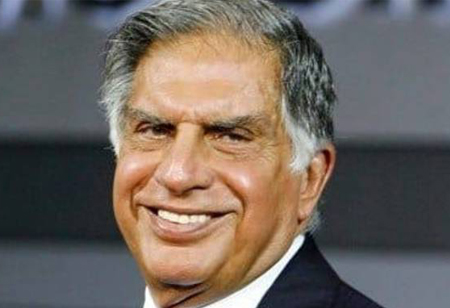
CEO Insights Hall of Fame: Eight Leaders Who Carved the Indian Automotive Sector

Ratan Tata—One-Man Army Who Built His Automotive Empire

Calling the name of the successor of the Tata family, Ratan Tata, as a philanthropist and a business tycoon is an understatement, for his strategic mind has set forth new chapters into various industries. A gem of a grandson to his great grandfather, Jamsetji Nusserwanji Tata, who built the Tata Group, Ratan Tata’s legacy is deeply intertwined into the roots of the group’s very basis.
Not only did he carry forward the legacy, but he helped it venture into various industries that remain ever successful today both within the country and overseas. A common aspect behind each of the Tata Group’s business segments is that they are, in a way, connected to different strata of society or people’s lives. Tata Motors also laid the founding ground with that essence, particularly after the launch of the Tata Nano or, most popularly called, the People’s Car. Let’s take a drive with the People’s Car into the route of revolution.
The automotive business of the Tata Group, Tata Motors, made a drive-through in 2008 with the Tata Indica. Tata Indica was a car that Ratan Tata worked closely with and was launched right at the boiling point of the automotive competition. It was designed to fit the expectations of Indian car buyers and was on par with those of international brands during the 1990s. It gained fame as India’s first indigenously built passenger car, placing the country on the podium for its capability in designing and manufacturing automobiles. After Indica, Tata Tiago became one of the country's most popular cars. Then came the Tata Nano, which was a complete game-changer that served as inspiration to the automotive industry.
The People’s Car
Tata Nano was ‘that’ car every family, under less economic circumstances, dreamed of buying. This car was solely invented based on that vision and was launched at the 2008 Auto Expo in India as ‘The People’s Car.’ The car was small but spacious, ensuring comfort and safe mobility for the masses, and it was sold for Rs.1 lakh. However, it didn’t do well commercially due to numerous factors. Yet, it did widen the spectrum in the industry by inspiring other carmakers to make their own affordable cars.
The Time Ratan Tata Served Revenge to Ford
When Tata Motors bought Jaguar Land Rover, it elevated the company to a global league, receiving international recognition and expertise in India. But there is a revenge story behind this feat. Upon Indica’s low response from the market, Tata decided to sell the business. The year was 1999. Ratan Tata’s car business was not doing well, so he and his team flew to the US to approach Bill Ford to sell the business. But was met with negative remarks about Tata starting a passenger car business with inadequate intel about it and that Ford was doing him a favor by buying the division. Tata dismissed the thought of selling the division and instead worked on improving its business. Nine years later, that is, by 2008, success was blessed upon the carmaker for best-selling cars, winning world-level fame. The tables turned; Ford’s sales were not up to the margins in 2008, and Ford approached Tata to sell their business. Tata took over the company’s iconic Jaguar-Land Rover brands for $2.3 billion. Bill Ford thanked Tata, expressing that it was a big favor to buy JLR.
Tata not only acquired JLR but also successfully transformed it into one of their most prosperous businesses.
After the takeover, JLR experienced a sharp decline in value but now forms the cornerstone of Tata Motors's finances. Tata Motors' best-selling vehicles include the Land Rover and Jaguar models.
Ratan Tata saw electric cars (EVs) as the way of the future. Driving the EV revolution in India, Tata Motors introduced electric vehicles such as the Tigor EV and Nexon EV. Under Ratan Tata's direction, Tata Motors prioritized safety and innovation. Campaigns such as 'Born of Pedigree' highlighted the safety standards that were maintained in their cars.
Tata did not limit his contributions to Tata Motors. The company's activities have improved and supported a great deal of auxiliary businesses, which has strengthened the automotive ecosystem in India.